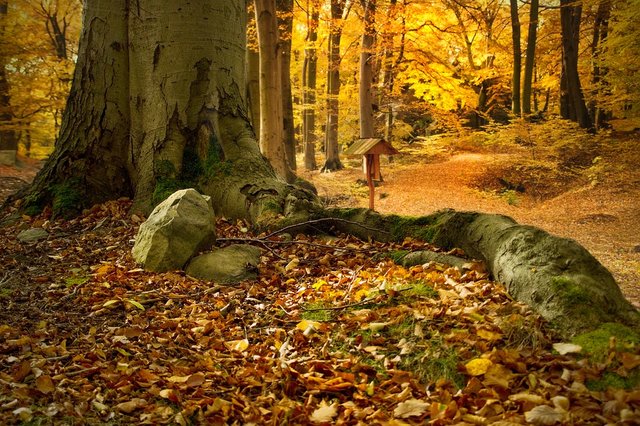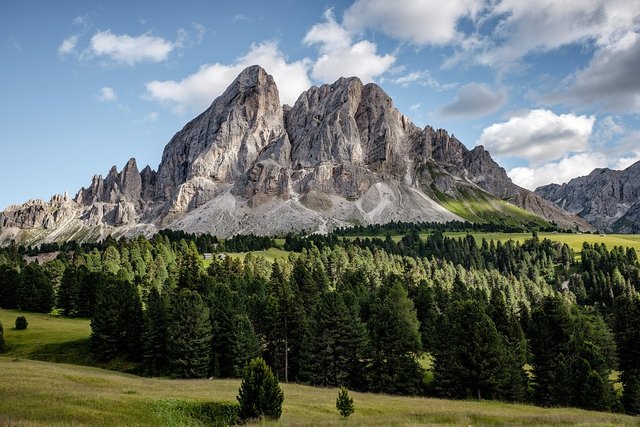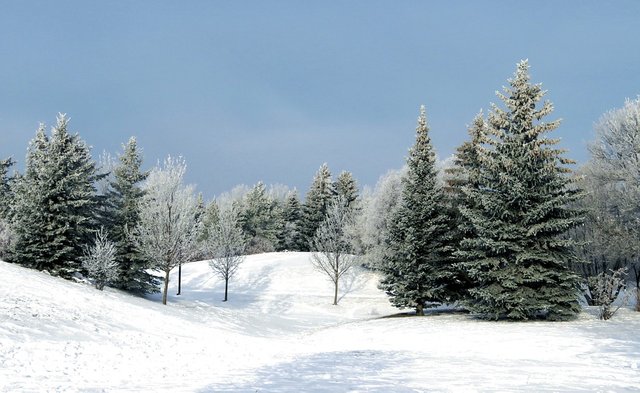Why are EVERGREENS.... Evergreen?
It's the Christmas season and the very popular tradition of lighting and decorating Christmas trees is upon us. Have you ever stopped to wonder why the trees we use for Christmas decorations remain green despite the extreme climatic changes? Have you ever wondered why its leaves don't dry up or shed like other trees?
The trees that remain green all year round are called Evergreen trees.They actually lose their leaves or needles in bits; all year round.Therefore, you can never catch them all dried up. On the other hand, trees that have wide and flat leaves that turn brown or yellow during autumn; and shed during winter; are called deciduous trees.
Now the question is...
Why?
Are all trees not made of the same components?
How can some be evergreen and beautiful, and then others so different?
There's a very scientific explanation for this!
First, let's take a closer look at deciduous and Evergreen Trees and find out what actually makes them so different.
Deciduous Trees
The term deciduous means "the dropping of a part that is no longer needed". This usually occurs in plants through natural processes. Deciduous trees are those that lose all of their leaves for a part of the year in a process called abscission. Most times, this process coincidences with winter; In places where there is no winter, it occurs during the dry season.

During spring and summer, the abscission cells help to transport water to the leaves of a tree and transport nutrients from the leaves to the rest of the tree.
As winter approaches and there's less sunlight each day, the reduction in sunlight triggers growth of the abscission cells. They grow, but the number of cells doesn't expand overall. Because the number overall doesn't expand, this growth of individual cells chokes off the water supply to the leaf. The abscission layer also becomes crumbly and brittle, eventually causing the leaf to fall off.
Many deciduous trees produce more flowers when they shed their leaves. They do this in a bid to increase pollination. The absence of leaves improve wind pollination and also the visibility of flowers which increase insect pollination.
The process of photosynthesis tends to reduce the supply of chlorophyll. Most deciduous trees replace their chlorophyll during the summer which has the perfect climatic conditions for them. When autumn comes, the days are shorter and the plants are unable to produce enough chlorophyll to make and keep the leaves green. This gives space for other pigmentation to form, leading to the changes of color of the leaves.

Shedding leaves helps trees to conserve water and energy. As unfavorable weather approaches, hormones in the trees trigger the process of abscission whereby the leaves are actively cut-off of the tree by specialized cells.
Some Deciduous trees include maple, many oaks and nothofagus, elm, aspen, and birch, among others, as well as a number of coniferous genera, such as larch and Metasequoia. Deciduous shrubs include honeysuckle, viburnum, and many others. Most temperate woody vines are also deciduous, including grapes, poison ivy, Virginia creeper, wisteria, etc.
Evergreen Trees
An evergreen is a plant that has leaves throughout the year, always green. In contrast to the deciduous who losses foliage during winter or dry season, Evergreen retains foliage during warm climates and uses it all through winter.

Evergreen trees do lose leaves, but they do so gradually all through the year. This is actually an adaptation as most evergreens can survive temperatures as cold as −30 °C (−22 °F). The Evergreen trees are adapted to low levels of nutrients.
Evergreen trees don't lose water and light to the atmosphere as easily as regular leaves do, so there's still enough water and light in the needles to keep photosynthesis going throughout the winter.

Evergreen leaf and needle litter has a higher carbon-nitrogen ratio than deciduous leaf litter, contributing to a higher soil acidity and lower soil nitrogen content. These conditions favor the growth of more evergreens and make it more difficult for deciduous plants to persist.
Examples of Evergreen Trees Include:
Most species of conifers (e.g., pine, hemlock, blue spruce, red cedar, and white/scots/jack pine), but not all (e.g., larch)live oak, holly, and "ancient" gymnosperms such as cycadsmost angiosperms from frost-free climates, such as eucalypts and rainforest treesclubmosses and relatives.
Concluding Thoughts
If you've followed through my examination of these two types of trees, you'll see that the Evergreen trees (typically trees used as Christmas trees) remain green all year round because it has adapted itself to retain enough water to be used for photosynthesis even when there's no proper water supply.
Evergreen needles also have a very waxy coating that also helps save water during summer and winter.
Thank you for reading!
All Images are from pixabay.com.
Text Sources
 by @foundation
by @foundation
Thanks for pointing out the difference.
Survival
Every element of nature with its mode of survival. Who will have taught the shedding of leaves has to do with life-span.
Nice post.
Definitely! Every organism has it's pattern
Thanks for actually reading!
Yea bro. You welcome
Marry Christmas I love Cristy tree a lot and also want enjoy one Christmas night...
Am sure it'll take you longer than 1 minute to completely read and understand the post! 😊
I have read it.
Truly a well detailed epitome of nature
Thanks for reading!
Its good to find out the truth about Christmas. Jesus was not born on December 25 and Christmas has its origin from false religion.
Are you guys actually serious? I never even talked about Jesus in the post!